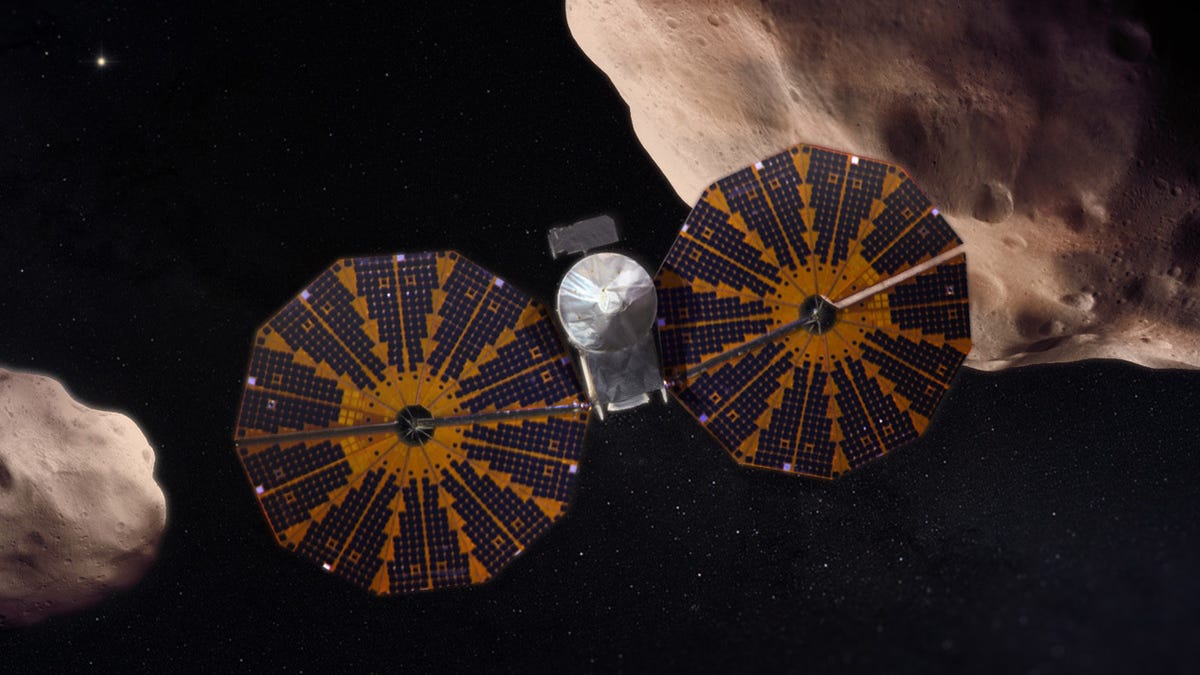NASA Spacecraft Captured May Lunar Eclipse From 64 Million Miles Away
See the long-distance love letter from a spacecraft destined to explore asteroids.

NASA's Lucy spacecraft will visit a series of asteroids.
NASA's asteroid-exploring Lucy spacecraft is a long way from home, but it took time to look back and enjoy the total lunar eclipse last weekend, capturing a view from 64 million miles (100 million kilometers) away in space .
The scene from that far away was much different than what we saw on Earth or even what the astronauts on the International Space Station saw when our planet cast its shadow across our lunar neighbor. "At this distance, the Earth and Moon appeared only 0.2 degrees apart to Lucy, having the same separation as a car's tail-lights as viewed from a quarter-mile (400 meters) away," NASA said in a statement on Friday.
Southwest Research Institute (SwRI), which leads the mission, shared a timelapse video showing the first half of the eclipse. Earth appears on the left, a blobbish-looking, rotating object. The moon appears more faintly on the right and disappears into darkness.
The eclipse footage comes from 86 exposures taken by a high-resolution black-and-white camera and covers about three hours of time.
Lucy launched in October 2021 on a jaunt to visit Jupiter's trojan asteroids. "When the team realized Lucy had a chance to observe this lunar eclipse as a part of the instrument calibration process, everyone was incredibly excited," said Lucy principal investigator Hal Levison in an SwRI statement.
The mission will investigate relics from the early solar system, and it will take some time to get there, reaching its first Trojan asteroids in 2027.
Lucy might not have had the clearest, closest view of the eclipse, but the power of the video is in the perspective. It's not just a lunar eclipse view, it's also a testament to human efforts to explore the wider solar system and better understand where our planet, our moon and ourselves came from.

